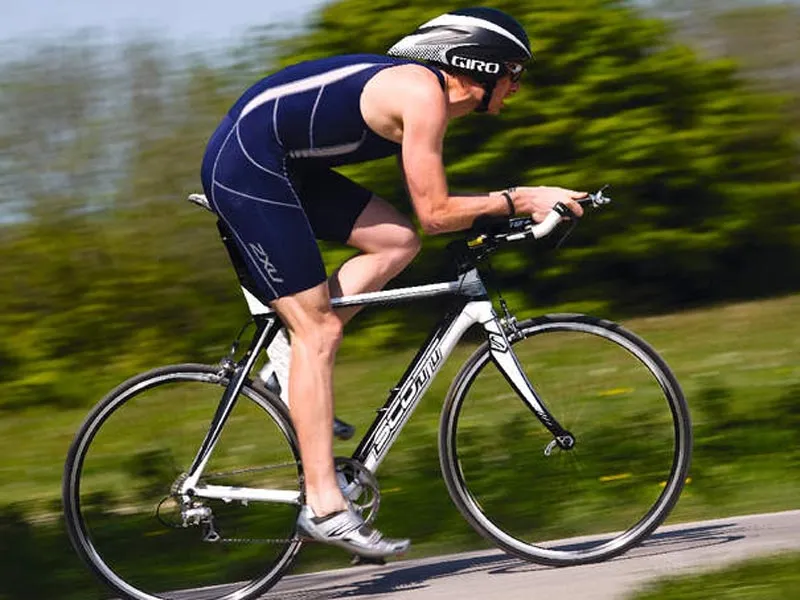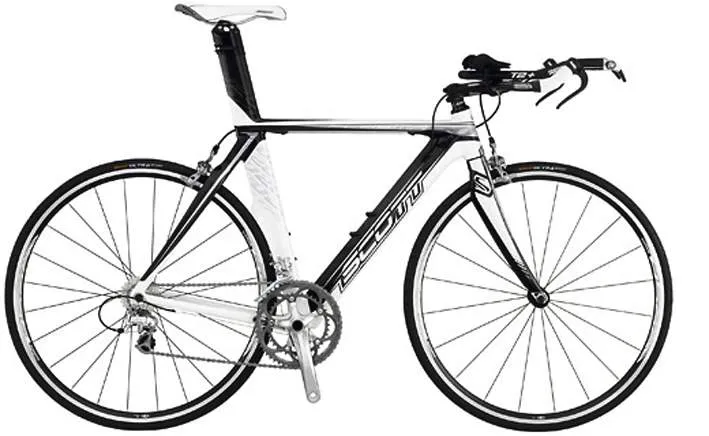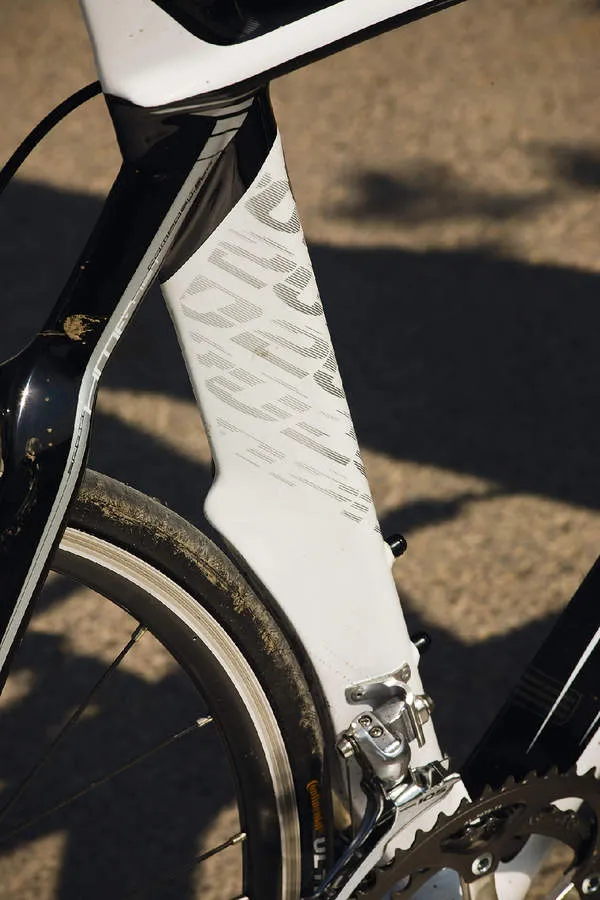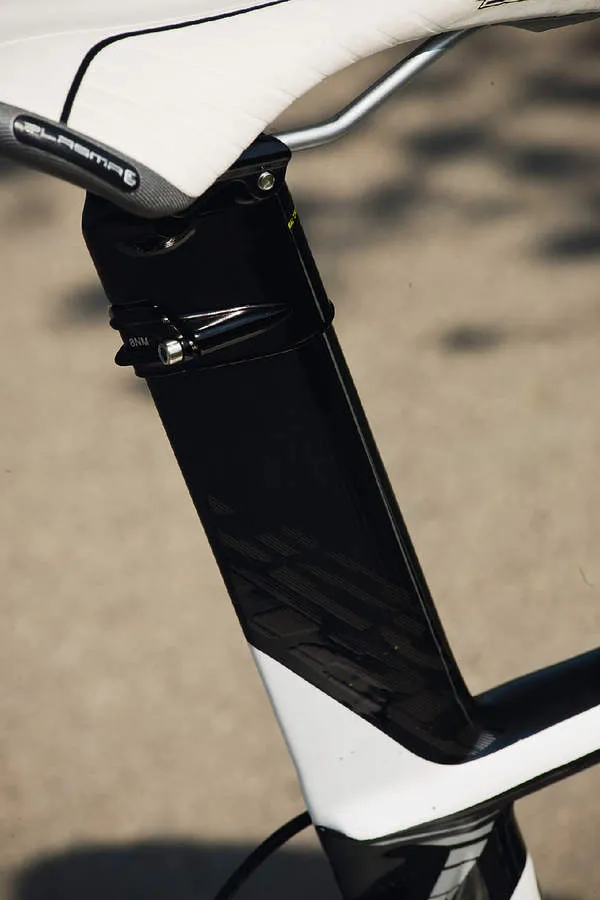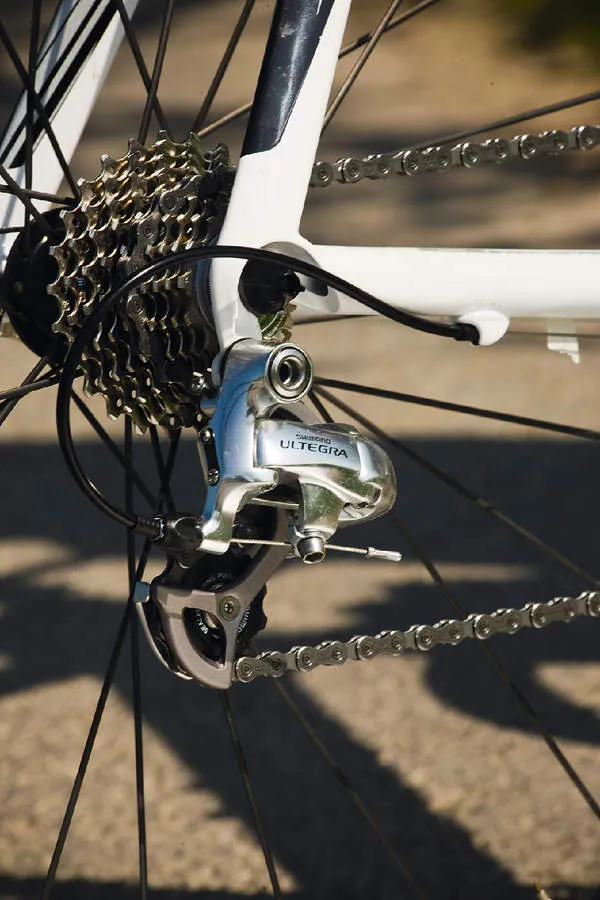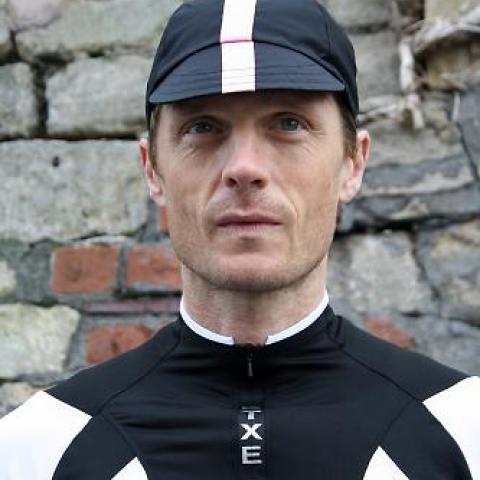The Plasma 20 is the most affordable bike in Scott's Plasma range of time trial bikes. We've ridden the range-topping Plasma Ltd and absolutely fell in love with its fast, sweet ride. Trouble is, the Ltd costs nearly £5,800, so we got in the Plasma 20 to find out if all that speed has filtered down the range.
Ride & handling: smooth ride character keeps you comfortable for hours
Spin the cranks and the Plasma leaps into life. This is an energetic machine with crisp, direct acceleration and no sense of wallowing as you inject the power; the caveat is that the weighty wheels do dull the responsiveness slightly, as confirmed when we swapped some better hoops on and the bike was immediately sharper to pick up the pace.
On flat runs the Plasma is a joy, bounding along rapidly and isolating you just enough from road vibration. Any buzz that does get past all that carbon is mopped up by the spongy nose of Scott’s own tri saddle and Profile’s superb arm pads – it’s a very comfortable ride. And you should be able to get the setup positioned exactly as you want it, although that might involve cutting down the fork’s steerer tube to reduce the front-end height, which is easy to do.
Hit the hills and those wheels do take the wind out of the Plasma’s sails a little earlier than you might expect for a bike as light as this, but it’s still a talented climber. The back end remains firmly in place when you get out of the saddle and crank up the power and the Profile T2 Wing base bar stays reasonably rigid.
That frame damping we mentioned before saves you from motion blur on rapid descents, the 105 brakes are more than capable of bailing you out if you overdo it in the corners, and the best bit about the wheels is that they keep the bike firmly planted when the going gets rough.
All in all, the Plasma offers a very fast and enjoyable ride –but there’s a stunning ride in there waiting to get out. Keep the frame and forks and upgrade the various parts as they wear out and you’ll find it.
Frame: first-class lightweight frameset makes for rapid times
The Plasma’s frame is a carbon beauty with a tyre-hugging cutaway in the lower part of the seat tube and an extended section up top that does away with the need for a separate seat post. Instead, you chop the seat tube to the required height with a hacksaw – measure twice, cut once, remember! – and bolt the alloy seat mast straight on top.
It sounds scary but you get a little aluminium cutting guide and you can move the seat mast up about 2cm if you trim a touch low. No sweat. This system saves a few grams and it looks the business, but the frame might not fit inside your bike box for travelling.
The seat angle is a fairly conservative 76 degrees but flip the clamping hardware on top of the seat mast and you can shunt your saddle further forward. That’ll get you closer to 80 degrees – plenty for anyone.
The head tube is a touch longer than you’ll find on most time-trial rigs, but once we’d moved the stem as low as it would go on the carbon fork steerer we had a perfectly flat riding position.
Equipment: spec is sound rather than mind-blowing
The Plasma comes fitted with a real mix of mid-range components. The front mech and brake callipers come from Shimano’s 105 group, which is perfectly functional kit, while the Ultegra rear mech is the clear highlight.
Truvativ Elita cranks don’t look too pretty but they get the job done, and the only problem with the Profile alloy cockpit is that it adds height to an already fairly tall front end.
The R500 wheels aren’t the finest to ever roll off the Shimano production line. Let’s be honest, they’re a hefty, budget option and when you’re due a treat they have to go straight on to your training bike to make way for something lighter and more aero… because you’re worth it.
